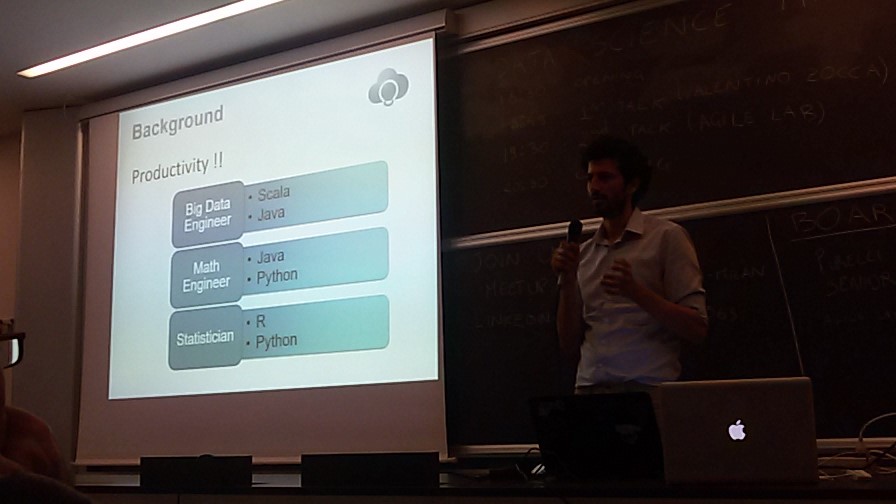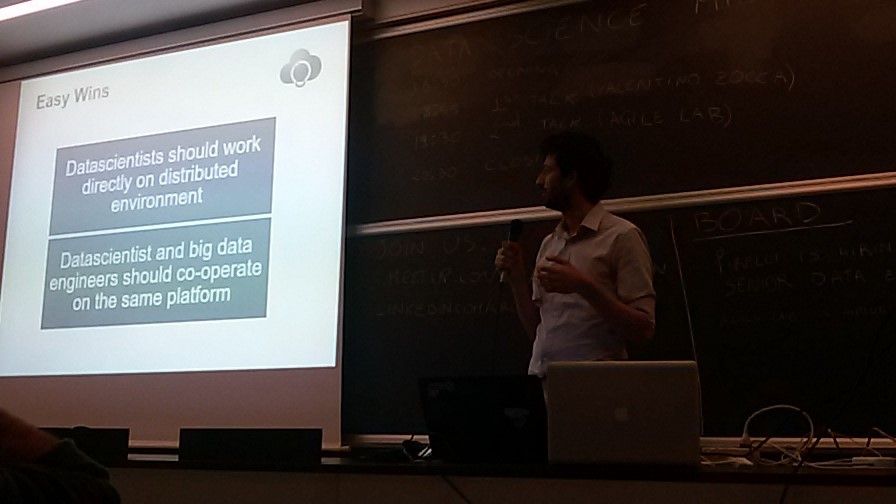#DeepLearning introduction and enterprise architectures using #H2O - first #DataScienceMilan meetup! - https://t.co/I8LsfaFJSu
— Andrea Scarso (@andreaesseci) May 18, 2016
A new Data Science meetup is out in Milan. Two talks about Deep Learning were given in the first event.
Neural Networks and Deep Learning: An Introduction. @MilanHighTech. The first talk by Valentino Zocca was a quick intro to Deep Learning The speaker was able to explain the role of the additional layers in a neural network. Each layer is learning something, and each one is learning a different representation of the output. In particular, each additional layer is learning a more abstract representation of the output.
 {.alignnone
width="370" height="506"}
{.alignnone
width="370" height="506"}
Each layer is learning a higher level of abstraction. In the example, the first layer is learning the edges in the image; the second layer is learning the parts of a face like the nose or the eye; the third layer is learning large sections of a face. Ref: "Convolutional Deep Belief Networks for Scalable Unsupervised Learning of Hierarchical Representations", Lee et al.
Bringing Deep Learning into production. @axlpado. The speaker gave his point of view on deploying machine learning algorithms in production. There are a variety of frameworks, and it's always easy to choose which one to adopt. He gave a series of interesting tips, and I'll write here the main ones.
You can write machine learning in many languages such as Python, Java, R, Matlab, Scala, etc. A good guideline is: choose the one you know the most. Do not add the complexity of learning a new language to the complexity of designing the algorithm.
Different languages in different teams.
 {.alignnone
.size-full .wp-image-58 width="896" height="504"}
{.alignnone
.size-full .wp-image-58 width="896" height="504"}
It can be challenge to bring machine learning models from a team to another. The reason is that often teams work in different languages or in different frameworks. This organization leads to complex deployment processes.
 {.alignnone
.size-full .wp-image-59 width="896" height="504"}
{.alignnone
.size-full .wp-image-59 width="896" height="504"}
Paolo recommended to have the entire team on the same framework. The idea is to have the deployment pipeline as smooth as possible. It can be an effort for the data scientists at the beginning to learn the data engineer tools, but it can make the difference on the long term.